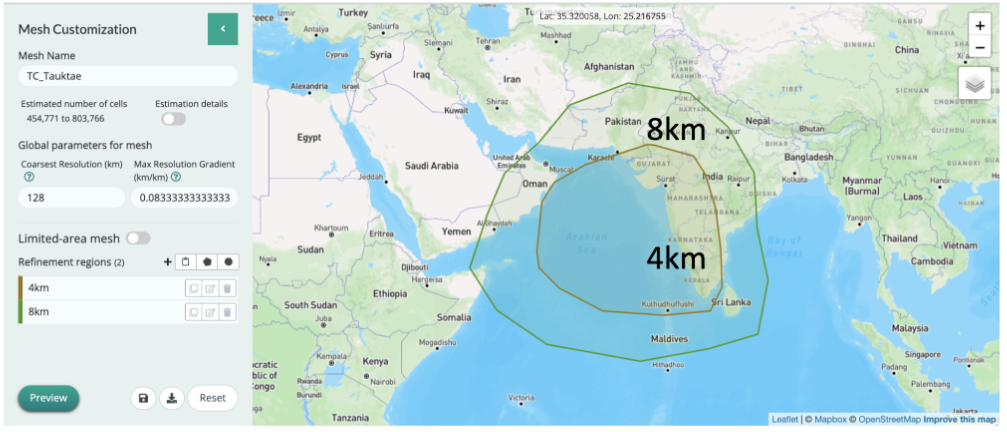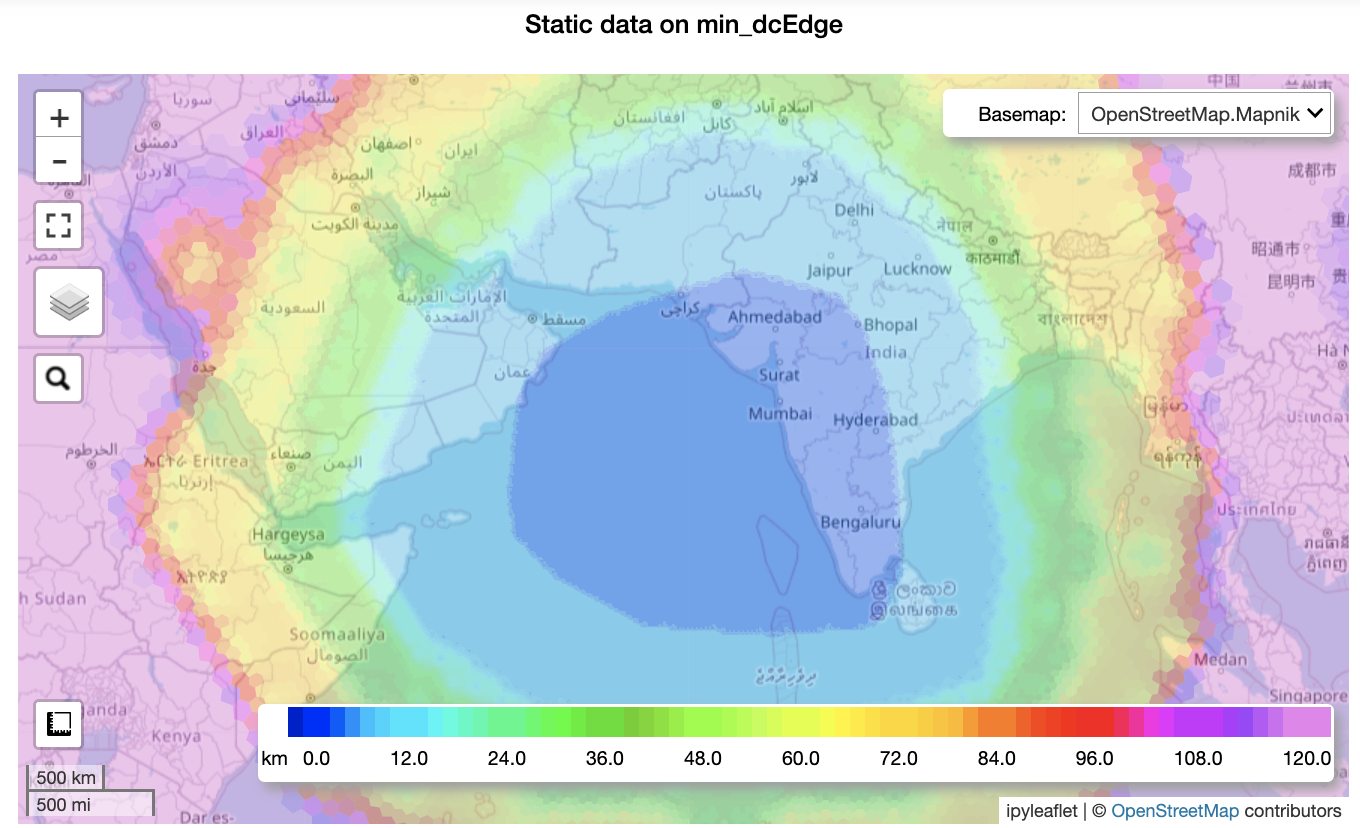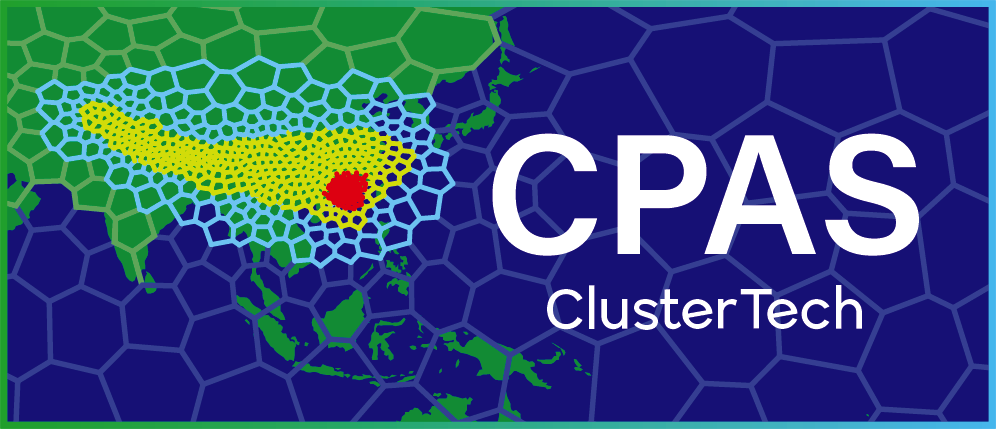Capability of CPAS in predicting tropical cyclone in Indian Ocean - Tauktae
Background
On May 13, 2021, an area of low pressure was detected in the Arabian Sea that turned into a deep depression on May 14. This led to the development of Tauktae, which was one of the strongest tropical cyclones to hit India's west coast.
The North Indian Ocean generates only about 7 percent of the world's tropical cyclones (NASA, 2021), but they can be devastating due to the large number of people living along low-lying coastlines.
Tauktae caused heavy rainfall and flash floods in areas along the coast of Kerala and on Lakshadweep, resulting in 169 deaths and 81 missing people in India (TOI, 2021).
The aim of this project is to discuss CPAS's capability in predicting cyclones development in the Indian Ocean.
Forecast configurations of CPAS
The initial time of the simulation starts at 00UTC, 14 May 2021, the time when the cyclone was still a deep depression in the Arabian Sea. The simulation covered a region of 4km and 8km resolution, which included potential cyclone tracks in the Northern Indian Ocean, to predict Cyclone Tauktae.


GFS (Global Forecasting System) data is used as the initial data and the CPAS model output variables are mean sea level pressure, temperature, wind speed, and geopotential height.
Results comparison between GFS, CPAS, and the real cyclone track

Meteorological analysis of the motion of Tauktae by CPAS





The performance of CPAS model in predicting Tauktae
The CPAS global model used GFS’ initial conditions at at 2021-05-14 00:00 (UTC) for the simulation of Tauktae. With a 8-4 km mesh with 366,347 cells (8 km resolution in the target region around usual tracks of TCs, and 4 km resolution for orographic and coastal boosts in Fig. 1a,b) and mesoscale reference physics schemes.
Based on Fig. 2, the predicted location where Tauktae would make landfall was just a few kilometers to the west of the best track, indicating a higher degree of accuracy compared to the GFS forecast.
The predicted mean sea level pressure and 10-m wind speed at 2021-05-17 03:00 (UTC) are demonstrated in Figs. 3 and 4. Additionally, Fig. 5 displays the predicted 10-m wind field at 2021-05-17 03:00 (UTC). At the time of the cyclone's peak intensity, CPAS was able to provide a reasonably precise prediction of Tauktae’s intensity of sea level pressure and wind speed.
As shown in Fig.6 & 7, the forecast minimum MSLP and maximum sustained wind speed of Tauktae at 2021-05-17 03:00 (UTC) May by CPAS were about 920 hPa and 69.4 m/s, respectively, which were relatively close to observed situation of the Cyclone (950 hPa, 51.4 m/s) from National Oceanic and Atmospheric Administration (NOAA).
Besides, the predicted landfall location of Taukate was only a few tens of kilometers to the west of the best track. It is more accurate than the GFS forecast.
This showcases that the finer resolution (8-4 km vs 13 km in GFS) in CPAS over the target region could potentially provide extra details in short-term tropical cyclone forecasts, such as the finer-scale wind speed distribution of the storm.
Summary
The fine-resolution nature of CPAS has effectively covered the potential track of the cyclone. CPAS can predict cyclogenesis early in the Indian Ocean using fine resolution and provides satisfactory results.
Reference
NASA. (2021). Cyclone Tauktae Strikes India. NASA. Retrieved May 5, 2023, from https://earthobservatory.nasa.gov/images/148325/cyclone-tauktae-strikes-india
TOI. (2021). Tauktae cyclone killed 122, forced 2.6 lakh evacuation in 6 states: Government: India News - Times of India. The Times of India. Retrieved May 5, 2023, from https://timesofindia.indiatimes.com/india/tauktae-killed-122-forced-2-6l-evacuation-in-6-states-government/articleshow/82816075.cms
